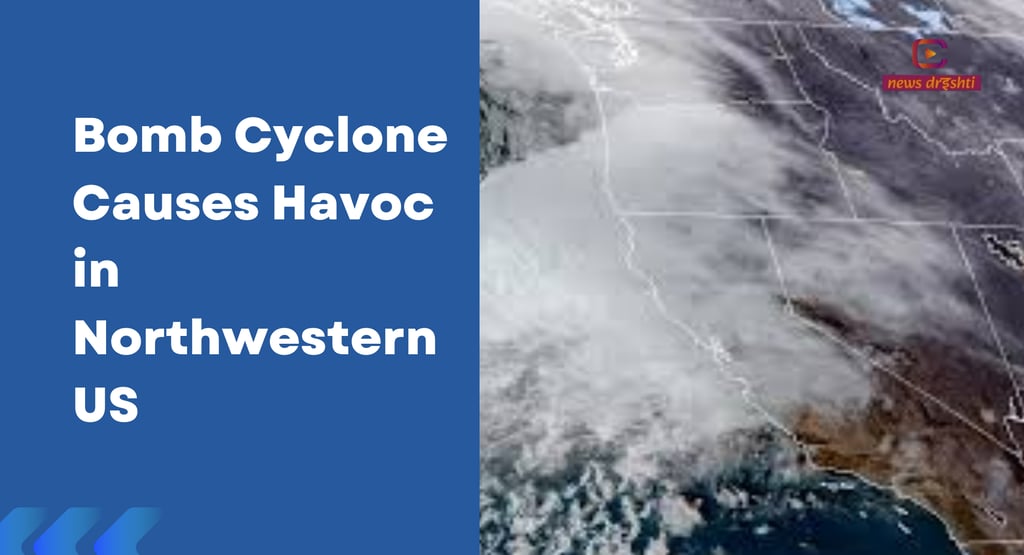Bomb Cyclone Causes Havoc in Northwestern US
A powerful bomb cyclone has devastated the northwestern United States, leading to widespread power outages and severe flooding. The National Weather Service warns of excessive rainfall and damaging...
INTERNATIONAL


A powerful bomb cyclone has wreaked havoc across the northwestern United States, causing widespread power outages, severe flooding, and damaging winds. Classified as a bomb cyclone due to its rapid intensification, the storm system has brought the strongest atmospheric river of the season, severely impacting Washington, Oregon, and parts of Northern California.
Heavy Rainfall and High Winds
The National Weather Service (NWS) has warned of excessive rainfall from Tuesday through Friday, with the heaviest downpours expected between Portland, Oregon, and Northern California. Low-lying areas face heightened risks of flash flooding, while higher altitudes are bracing for winter storms. In Yolo County, California, local crews have been working around the clock to clear drainage systems and prevent flood damage.
Wind gusts exceeding 75 mph (121 kph) have battered coastal areas, toppling trees and power lines. Washington state’s Pacific County and Oregon’s coastline are among the hardest-hit regions, with hurricane-force winds and peak gusts recorded at 68 mph (109 kph) at Crystal Mountain and 53 mph (82 kph) at Ediz Hook. In the Sierra Nevada mountains, snowfall at elevations above 3,500 feet has prompted a winter storm watch, with significant travel disruptions expected.
Power Outages and Infrastructure Struggles
The storm has caused widespread power outages, leaving approximately 94,000 customers in western Washington and 12,000 in Oregon without electricity by Tuesday evening. Utility companies have been working tirelessly to restore services, but ongoing severe weather has posed challenges. Coastal residents, especially near Seattle, have also been warned of "mountain waves," which could further exacerbate power disruptions.
In addition, transportation systems have faced major disruptions. Washington State Ferries have reported cancellations, and transport officials have advised postponing non-essential travel until conditions improve.
Climate Change and Future Risks
Meteorologists and climate experts, including Oregon Climate Service Director Larry O’Neill, have pointed to warmer Pacific Ocean temperatures as a contributing factor to the storm's intensity. This extreme weather event has reignited discussions about the increasing frequency of such phenomena due to climate change.
Looking Ahead
As the storm system continues to move inland, residents are advised to stay updated on weather alerts and remain cautious. Emergency shelters and services are on standby to assist those affected. With heavy rain, snow, and strong winds persisting, authorities urge communities to prioritize safety until conditions stabilize later this week.
